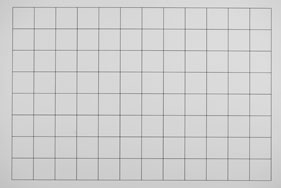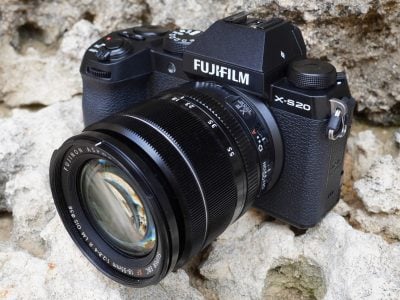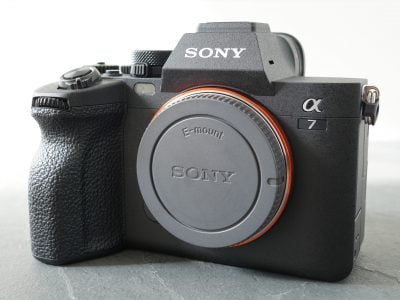Nikkor AF-S DX VR 55-200mm f/4-5.6 G ED
-
-
Written by Gordon Laing
Quality
Nikkor DX 55-200mm f/4-5.6 VR resolution with Nikon D80
 | To measure and compare the resolving power of the Nikkor DX 55-200mm VR lens, we photographed the Enhanced Digital Camera Resolution Chart with it and a number of rival lenses using a Nikon D80. We tested each lens at a focal length near the lower end of each optical range and at an aperture of f8 for the maximum sharpness. The D80 was set to Large Fine JPEG mode and its Optimise Image parameter set to Normal.
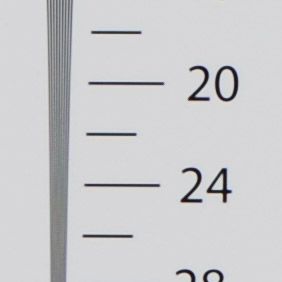 The crops are taken from the original images, saved as High Quality JPEGs in Photoshop CS2 and presented here at 100%. Each number represents 100 lines per picture height (lpph), so a figure of 20 means a resolution of 2000 lpph. |
| The DX 55-200mm VR at 70mm f8 scored 2150 lpph for both horizontal and vertical resolution, which is essentially the same as that measured for the other lenses shown here. Clearly the 10 Megapixel sensor of the Nikon D80 is the limiting factor here. Interestingly our 70-300mm VR sample scored fractionally lower in its vertical resolution when set to 100mm f8, but this certainly wasn’t noticeable on our real-life sample images. Now let’s take a look at the corner sharpness results. |
Nikkor DX 55-200mm f/4-5.6 VR Using Nikon D80 | Nikkor 70-300mm f/4.5-5.6 VR Using Nikon D80 | |
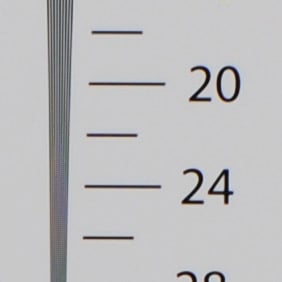 | ||
2150 lpph, DX 55-200mm at 70mm, f8, 100 ISO | 2150 lpph, 70-300mm at 100mm, f8, 100 ISO | |
Nikkor DX 18-135mm f/3.5-5.6 Using Nikon D80 | Nikkor DX 18-200mm f/3.5-5.6 VR Using Nikon D80 | |
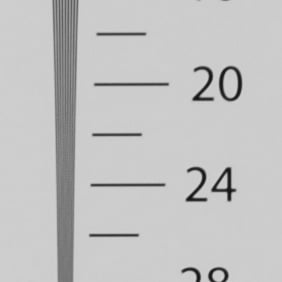 | 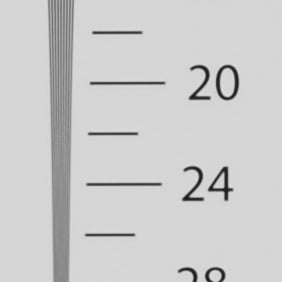 | |
2150 lpph, DX 18-135mm at 35mm, f8, 100 ISO | 2150 lpph, DX 18-200mm at 35mm, f8, 100 ISO |
Nikkor DX 55-200mm f/4-5.6 VR Using Nikon D80 | Nikkor 70-300mm f/4.5-5.6 VR Using Nikon D80 | |
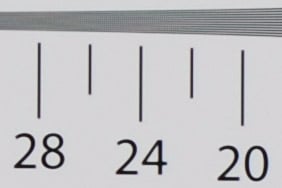 | 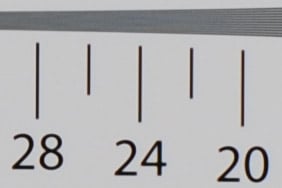 | |
2150 lpph, DX 55-200mm at 70mm, f8, 100 ISO | 2100 lpph, 70-300mm at 100mm, f8, 100 ISO | |
Nikkor DX 18-135mm f/3.5-5.6 Using Nikon D80 | Nikkor DX 18-200mm f/3.5-5.6 VR Using Nikon D80 | |
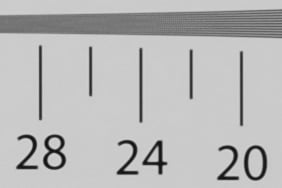 | 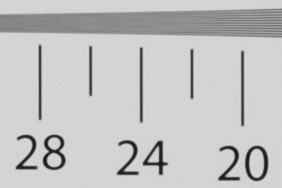 | |
2150 lpph, DX 18-135mm at 35mm, f8, 100 ISO | 2150 lpph, DX 18-200mm at 35mm, f8, 100 ISO |
Nikkor DX 55-200mm f/4-5.6 VR corner sharpness comparison
 | To measure and compare the corner sharpness of the Nikkor DX 55-200mm VR, we photographed the Enhanced Digital Camera Resolution Chart with it and a number of rival lenses at their shortest and longest focal lengths using a D80 at various aperture settings. The D80 was set to Aperture Priority, Large Fine JPEG mode and the Optimise Image parameter set to Normal. The crops are taken from the lower left corner of the chart and presented here at 100%. The crops which show a slightly larger area of the chart are due to minimum focusing distances forcing us to shoot from a little further away. No crops have been resized. |
| Zoomed-out to its shortest focal length, the DX 55-200mm VR delivers fairly respectable results in the corners with no apparent coloured fringing and only slight softening when the aperture is wide open. In contrast, the pricier 70-300mm exhibits visible fringing at all apertures in this part of the test, although it should be noted this chart is photographed at relatively close distance, so be sure to also compare our real-life results with the lenses focused on more distant subjects |
Zoomed-into its longest focal length, the DX 55-200mm VR suffers from a little softness in the corners at all apertures, and vignetting when the aperture is wide open. In real-life results we often found the DX 55-200mm VR was noticeably softer and suffering from greater fringing in the extreme corners when zoomed-in compared to the 70-300mm VR – but again the latter is a pricier lens which is also designed for use on full-frame bodies, so it should do well on Nikon’s cropped frame DX-format DSLRs. Now let’s see how the lenses perform in terms of fringing and macro.
Nikkor DX 55-200mm f/4-5.6 VR | Nikkor 70-300mm f/4.5-5.6 VR | Nikkor DX 18-135mm f/3.5-5.6 | Nikkor DX 18-200mm f/3.5-5.6 VR | |||
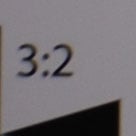 | 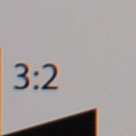 | 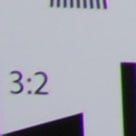 | 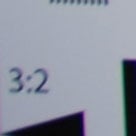 | |||
DX 55-200mm at 55mm f4 | 70-300mm at 70mm f4.5 | DX 18-135mm at 18mm f3.5 | DX 18-200mm at 18mm f3.5 | |||
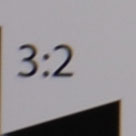 | 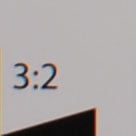 | 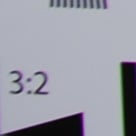 | 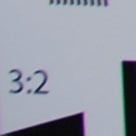 | |||
DX 55-200mm at 55mm f5.6 | 70-300mm at 70mm f5.6 | DX 18-135mm at 18mm f5.6 | DX 18-200mm at 18mm f5.6 | |||
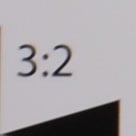 | 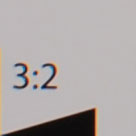 | 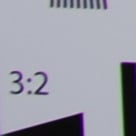 | 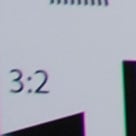 | |||
DX 55-200mm at 55mm f8 | 70-300mm at 70mm f8 | DX 18-135mm at 18mm f8 | DX 18-200mm at 18mm f8 | |||
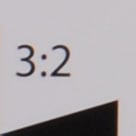 | 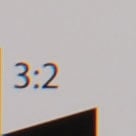 |  |  | |||
DX 55-200mm at 55mm f16 | 70-300mm at 70mm f16 | DX 18-135mm at 18mm f16 | DX 18-200mm at 18mm f16 | |||
Nikkor DX 55-200mm f/4-5.6 VR | Nikkor 70-300mm f/4.5-5.6 VR | Nikkor DX 18-135mm f/3.5-5.6 | Nikkor DX 18-200mm f/3.5-5.6 VR | |||
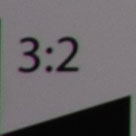 | 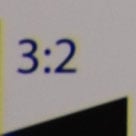 | 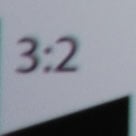 | 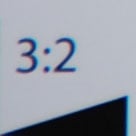 | |||
DX 55-200mm at 200mm f5.6 | 70-300mm at 300mm f5.6 | DX 18-135mm at 135mm f5.6 | DX 18-200mm at 200mm f5.6 | |||
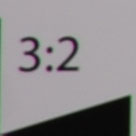 | 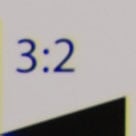 | 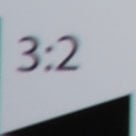 | 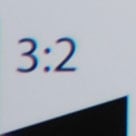 | |||
DX 55-200mm at 200mm f8 | 70-300mm at 300mm f8 | DX 18-135mm at 135mm f8 | DX 18-200mm at 200mm f8 | |||
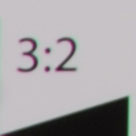 | 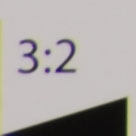 | 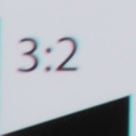 | 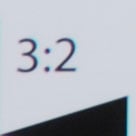 | |||
DX 55-200mm at 200mm f16 | 70-300mm at 300mm f16 | DX 18-135mm at 135mm f16 | DX 18-200mm at 200mm f16 |
Nikkor DX 55-200mm f/4-5.6 VR purple fringing comparison
 | To measure and compare the Nikkor DX 55-200mm VR’s purple fringing caused by lens chromatic aberrations and sensor blooming, we photographed a high contrast test chart using it and a number of rival lenses set to their shortest and longest focal lengths with the aperture wide open. The crops are taken from the upper left corner of the chart and presented here at 100%. |
The DX 55-200mm VR keeps fringing down at 55mm, but it can be apparent around high contrast subjects in the corners when zoomed-into 200mm.
Nikkor DX 55-200mm f/4-5.6 VR | Nikkor 70-300mm f/4.5-5.6 VR | Nikkor DX 18-135mm f/3.5-5.6 | Nikkor DX 18-200mm f/3.5-5.6 VR | |||
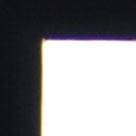 | 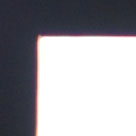 | 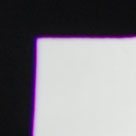 | 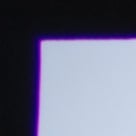 | |||
DX 55-200mm at 55mm f4 | 70-300mm at 70mm f4.5 | DX 18-135mm at 18mm f3.5 | DX 18-200mm at 18mm f3.5 | |||
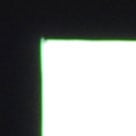 | 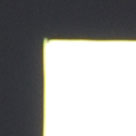 | 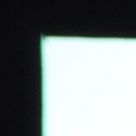 | 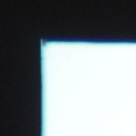 | |||
DX 55-200mm at 200mm f5.6 | 70-300mm at 300mm f5.6 | DX 18-135mm at 135mm f5.6 | DX 18-200mm at 200mm f5.6 |
Nikkor DX 55-200mm f/4-5.6 VR macro comparison
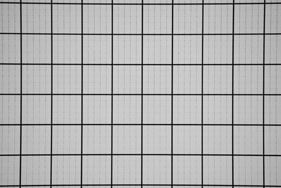 |
| DX 55-200mm VR at 200mm f8 Max area of 92x62mm |
| To measure and compare the Nikkor DX 55-200mm VR’s macro performance we photographed a chart using it and a number of rival lenses at a focal length and distance which delivered the maximum possible reproduction. |
The dark lines are 10mm apart and the result is not cropped. Smaller areas are preferred in this test.
The image left was taken with the Nikkor DX 55-200mm VR zoomed-into 200mm where it captured an area measuring 92x62mm. This puts it roughly on par with both the 70-300mm VR and DX 18-135mm. See our Gallery for a real-life macro example. Now let’s compare the geometric distortion of each lens.
Nikkor 70-300mm f/4.5-5.6 VR | Nikkor DX 18-135mm f/3.5-5.6 | Nikkor DX 18-200mm f/3.5-5.6 VR | ||
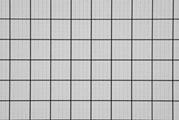 | 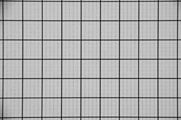 | 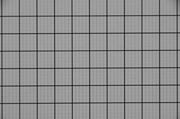 | ||
| 70-300mm at 300mm f8 Max area of 88x60mm | DX 18-135mm at 135mm f8 Max area of 94x62mm | DX 18-200mm at 200mm f8 Max area of 104x70mm |
Nikkor DX 55-200mm f/4-5.6 VR shortest focal length geometry comparison
To measure and compare the Nikkor DX 55-200mm VR’s geometric distortion we photographed a test chart consisting of a grid pattern, using it and a number of rival lenses. The lenses were tested at their widest focal lengths with an aperture of f8 in Aperture Priority mode. The images were analysed with Imatest using 5th Order line calculation and the full areas presented here at a reduced resolution. 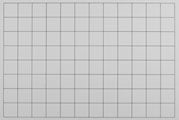 The image left was taken with the Nikkor DX 55-200mm VR at 55mm f8. Barrel distortion was measured at 0.2% which is barely noticeable, and in fact fractionally superior to the 70-300mm VR at 70mm. Note the DX 18-135mm and DX 18-200mm VR show greater distortion when zoomed-out due to their much wider focal lengths. Their results are included here as an overall view. The comparisons below when all four lenses are zoomed-in is more relevant. |
Nikkor 70-300mm f/4.5-5.6 VR | Nikkor DX 18-135mm f/3.5-5.6 | Nikkor DX 18-200mm f/3.5-5.6 VR | ||
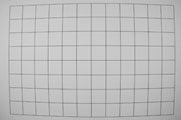 | 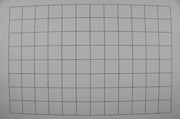 | |||
| 70-300mm at 70mm f8 Distortion: 0.31% barrel | DX 18-135mm at 18mm f8 Distortion: 5.48% barrel | DX 18-200mm at 18mm f8 Distortion: 5.26% barrel |
Nikkor DX 55-200mm f/4-5.6 VR
longest focal length geometry comparison
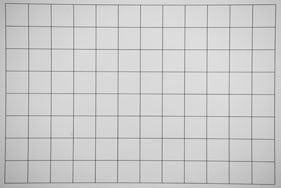 |
| DX 55-200mm VR at 200mm f8 Distortion: 1.27% pincushion |
| To measure and compare the Nikkor DX 55-200mm VR’s geometric distortion we photographed a test chart consisting of a grid pattern, using it and a number of rival lenses. |
The lenses were tested at their longest focal lengths with an aperture of f8 in Aperture Priority mode.
The images were analysed with Imatest using 5th Order line calculation and the full areas presented here at a reduced resolution.
| The image above was taken with the Nikkor DX 55-200mm VR at 200mm f8. Pincushion distortion was measured at 1.27% which is roughly the same as the DX 18-200mm VR when it’s also zoomed-into 200mm. The DX 18-135mm exhibits greater distortion when zoomed-in, even to just 135mm, but the 70-300mm VR delivers the best result here with the least distortion, even at its longer focal length of 300mm. Now let’s finally compare the vignetting and light fall-off of each lens. |
Nikkor 70-300mm f/4.5-5.6 VR | Nikkor DX 18-135mm f/3.5-5.6 | Nikkor DX 18-200mm f/3.5-5.6 VR | ||
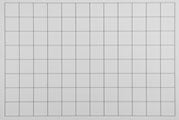 | 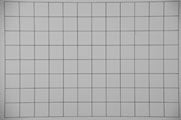 | 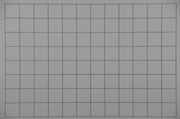 | ||
| 70-300mm at 300mm f8 Distortion: 0.72% pincushion | DX 18-135mm at 135mm f8 Distortion: 1.78% pincushion | DX 18-200mm at 200mm f8 Distortion: 1.22% pincushion |
Nikkor DX 55-200mm f/4-5.6 VR shortest focal length uniformity comparison
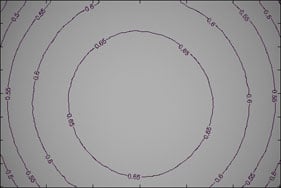 |
| DX 55-200mm VR at 55mm f4 Mean corner fall-off: 66.1% |
| To measure and compare the Nikkor 55-200mm VR’s vignetting and light fall-off we photographed a white target with a highly diffused custom filter using it and a number of rival lenses. |
The lenses were tested at their widest focal lengths with the aperture wide open in Aperture Priority mode.
The images were analysed with Imatest and the full areas presented here at a reduced resolution. Bigger percentages are better.
| The image above was taken with the Nikkor DX 55-200mm VR at 55mm f4. Here the light falls off in the corners to an average of 66.1% of the centre measurement, which results in much more noticeable darkening in the corners compared to the 70-300mm VR when it’s zoomed out to 70mm – although to be fair the latter is corrected for a full-frame body. The scores for the DX 18-135mm and DX 18-200mm VR are also included here for completeness, but can’t be fairly compared to the two telephoto zooms due to their much wider short focal lengths. The more relevant comparison is below when all four are zoomed-in. |
Nikkor 70-300mm f/4.5-5.6 VR | Nikkor DX 18-135mm f/3.5-5.6 | Nikkor DX 18-200mm f/3.5-5.6 VR | ||
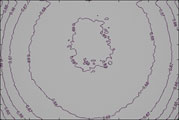 | 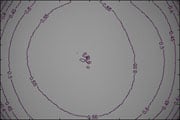 | 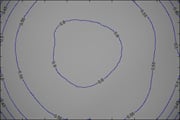 | ||
| 70-300mm at 70mm f4.5 Mean corner fall-off: 92.4% | DX 18-135mm at 18mm f3.5 Mean corner fall-off: 50.2% | DX 18-200mm at 18mm f3.5 Mean corner fall-off: 62.2% |
Nikkor DX 55-200mm f/4-5.6 VR longest focal length uniformity comparison |
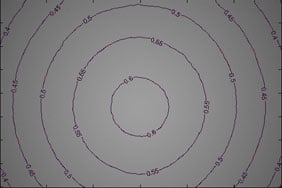 |
| DX 55-200mm VR at 200mm f5.6 Mean corner fall-off: 60.1% |
| To measure and compare the Nikkor 55-200mm VR’s vignetting and light fall-off we photographed a white target with a highly diffused custom filter using it and a number of rival lenses. |
The lenses were tested at their widest focal lengths with the aperture wide open in Aperture Priority mode.
The images were analysed with Imatest and the full areas presented here at a reduced resolution. Bigger percentages are better.
| The image above was taken with the Nikkor DX 55-200mm VR at 200mm f5.6. Here the light falls off in the corners to an average of 60.1% of the centre measurement, which is roughly similar to the DX 18-135mm when it’s zoomed-in, but not as good as the DX 18-200mm VR at 200mm. The 70-300mm VR once again delivers the best result here, although again it should do being designed for a full-frame body. That’s enough for our studio tests, so let’s check out some real-life results in our DX 55-200mm VR Gallery. |
Nikkor 70-300mm f/4.5-5.6 VR | Nikkor DX 18-135mm f/3.5-5.6 | Nikkor DX 18-200mm f/3.5-5.6 VR | ||
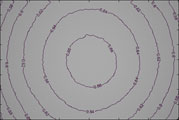 | 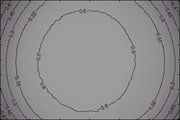 | 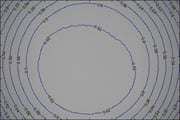 | ||
| 70-300mm at 300mm f5.6 Mean corner fall-off: 84.2% | DX 18-135mm at 135mm f5.6 Mean corner fall-off: 58.5% | DX 18-200mm at 200mm f5.6 Mean corner fall-off: 73.4% |
